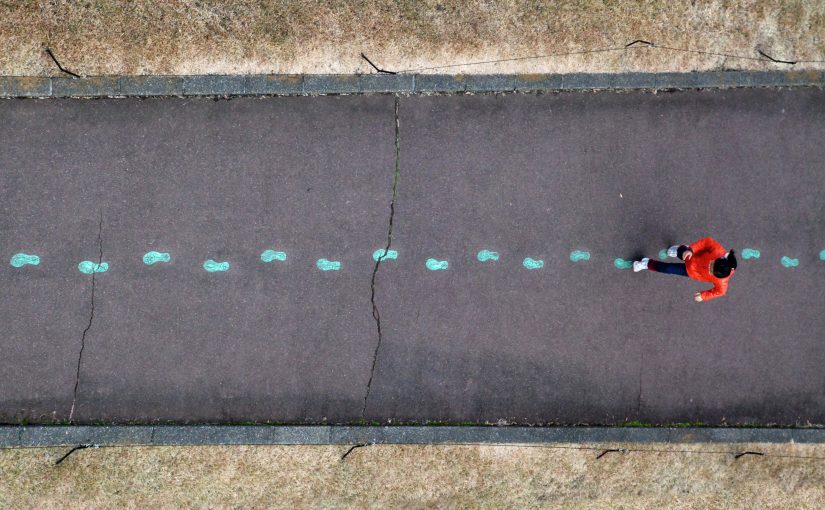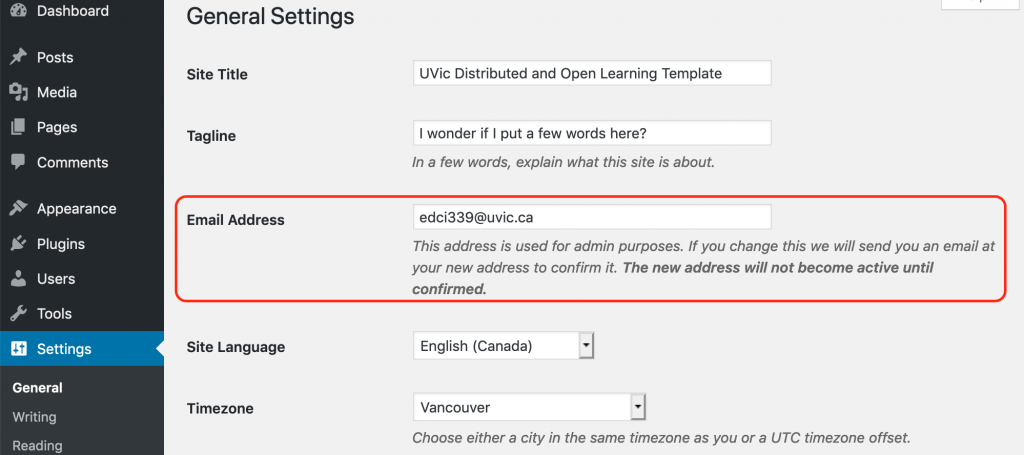“British Columbia has the largest and most diverse offering of Distance Learning Programs in Canada,” (“British Columbia Distance Learning Programs,” n.d.). “Since 1919, British Columbia has embraced open and distance learning to provide education opportunities across the vast province. British Columbia now has over 50 public and independent (i.e., private) schools offering distributed learning to almost 60,000 students in primary and secondary education” (Winkelmans, Anderson, & Barbour, 2010, p. 6). Although Distance Learning focuses on “using technology to overcome the barriers of geographical location” (Bacer, 2001), “distributed learning encompasses distance learning,” with an additional goal to “overcome the barriers of both location and time” (Bacer, 2001). I will be discussing both Distance and Distributed learning in this research post, therefore it is important that my audience knows the definition of each, in addition to being aware that these categories are often used interchangeably in the educational field. Before explaining the purpose of my research, I would like to mention that my initial plan for this research post was to critically examine the benefits and disadvantages of various online learning platforms for K-12 learners in British Columbia, based on research articles and reviews from the public. However, after many hours of searching, I have found that “Over the past fourteen years, there has been little federal funding for the development and research of K-12 online learning in Canada. This has largely been due to the fact that education is a provincial jurisdiction and there is no federal department with this responsibility in Canada” (Barbour & Stewart, 2008). Furthermore, there seems to be a finite amount of public review available that supports or expresses dissatisfaction towards any specific online K-12 educational platform in British Columbia. Due to this knowledge, I had then decided to search for and summarize specific Distance and Distributed learning platforms for K-12 learners, that are currently being used within the province. The purpose behind my research was to personally become aware of the various K-12 Distance or Distributed learning programs available for students in order to help guardians decided which program would best suit their child’s needs. The online programs that I have identified and summarized in this research post include SelfDesign, SIDES, and Heritage Christian Online School. The information that I have referenced was primarily derived from each school’s main webpage, as finding other sources was a difficult task. SelfDesign and SIDES were chosen due to their high enrollment rates. Heritage Christian School was selected on the basis of appealing to guardians who would like their child to practice their faith while learning.
SelfDesign
SelfDesign’s primary webpage known as Selfdesign.org states that “The SelfDesign Learning Community is among the largest distance/distributed learning schools and personalized learning programs in British Columbia, Canada” (SelfDesign, 2018). SelfDesign is a Distributed Learning independent school for K-12 learners, that serves approximately 2,500 students (Ministry of Education 2015, p. 3). It is also mentioned in the document produced by the Ministry that the school is fully funded, therefore no-fees are required to be paid in order to enroll (p. 3). According to Selfdesign.org, the program allows students to pursue their own interests while also offering personalized guidance from educators during their study period (SelfDesign, 2018). Although the school aims to promote personalized learning, students are still required to take online programs that are approved by the Ministry of Education (SelfDesign, 2018). Because SelfDesign is a fully distributed school, it can be useful to mention the various types of online tools that teachers were using with their students during the 2014 and 2015 school year. Whether or not a parent or student has the knowledge or ability to access these online tools could be seen as a deterrent or an asset when deciding to enroll. These tools included “Skype, Go to Meetings, Zoom, Google Plus, telephone, face-to-face, and emails” (Ministry of Education 2015, p. 3). Selfdesign.org also states that teachers who work for SelfDesign are all BC-certified educators, and guardians get to select the educator they would like their child to be paired with by picking from a “diverse pool of candidates” (SelfDesign, 2018).
SIDES
SIDES is another online Distance Learning program that offers courses to K-12 learners in BC, in addition to offering courses to adult learners who have not yet graduated (SIDES, n.d). SIDES stands for South Island Distance Education School because it’s a member of School District 63, which is located on Vancouver Island (SIDES, n.d). Despite its location, as long as the learner is a resident of BC, the courses offered at SIDES are tuition-free (SIDES, n.d). “SIDES has over 3,500 students currently enrolled, from ages five to eighteen,” (Wikipedia, n.d). Approximately 20 percent of these students claim that they have taken most of their accredited courses through SIDES (Wikipedia, n.d). The program differs from SelfDesign because of its cohort style model, which requires students to interact regularly with their teacher and other classmates (SIDES, n.d). SIDES incorporates both a synchronous and asynchronous modality because students are required to attend weekly virtual classes in addition to completing coursework on their own time (SIDES, n.d). SIDES also expects students to submit coursework regularly in order for teachers to give summative feedback (SIDES, n.d). The K-9 courses offered at SIDES follows the same core competencies as the new BC Curriculum. These competencies include critical thinking, creative thinking, communication, positive personal and social identity, and social responsibly (SIDES, n.d).
Heritage Christian Online School
Heritage Christian Online School is another Distributed Learning school offered within the province of British Columbia. Similar to SelfDesign, the school aims to connect families with teachers in order to provide individualized support for their child (Heritage Christian Online School, n.d). Due to its status as a Christian school, Heritage only receives half of the amount of funding that a public school would receive (Heritage Christian Online School, n.d). The website also indicates that the school stands behind four fundamental values. These values include flexibility, relationships, integrity, and academic success. Teachers begin the school year by creating a Student Learning Plan (SLP) for the learner. SLPs must abide by the curricular competencies provided by the Ministry of Education (Heritage Christian Online School, n.d). Due to the importance of communication between a teacher and their student’s, staff at Heritage stay in contact with their students through email, phone calls, zoom, Facebook, and texting (Heritage Christian Online School, n.d). These teachers also keep in contact with families on a weekly basis, as the school believes that constant communication is critical when evaluating student progress (Heritage Christian Online School, n.d). In addition to offering a fully Distributed Learning program, Heritage also supports homeschoolers but has made it clear to parents that there is a distinct difference between their Distributed Learning program and the help that they provide to students who are participating in homeschooling (Heritage Christian Online School, n.d). Students can be registered with the school, but in order to be enrolled, student course work must be adhering to the Ministries standards (Heritage Christian Online School, n.d). Students who are enrolled in their Distributed Learning program must also participate in FSA assessments, as well as be evaluated by a certified teacher (Heritage Christian Online School, n.d). Students in the DL program receive several luxuries that a student who is homeschooled may not. These benefits include having the ability to receive funding from the Ministry of Education, as well as being eligible to receive a Dogwood Graduation Certificate (Heritage Christian Online School, n.d).
Conclusions and Recommendations
In conclusion, all three of these online schools have distinct attributes amongst each other, as well as similar ones. For example, SelfDesign and SIDES are both fully funded by the Ministry of Education, whereas the students enrolled at Heritage Christian Online School have the potential to receive funding, but the school only receives half of the funding that SelfDesign and SIDES receive. Although SelfDesign and Heritage take a more individualistic learning approach by pairing up their students with one selected teacher, SIDES requires students to be placed in cohorts where they must interact with a teacher and other students. In terms of similarities, all students enrolled in these schools must be doing coursework that follows the BC Ministries curricular competencies. Provided that there are limited research and reviews available online that have information about these schools that is readily available, I hope that these summaries offer some insight into the values and protocols of each school. At this time, I am providing no recommendations in regards to which school a student would derive the most benefit from due to my belief that each student would have a different success rate at each discussed school depending on their personal experience. However, I hope that this research post can provide parents with more information about various online options that are available for their child in British Columbia. Hopefully, this information can then serve to support their decision when they decide to enroll their child into their school of choice.
Pod Partner Significance and Final Thoughts
As a final statement, I would like to mention the importance of my pod partner. She reminded me that it is okay to keep my topic relevant to my practice. My topic of choice came with limited online resources and scholarly articles available to me, but regardless of this drawback, it was important for me to have an in-depth understanding of the online courses offered in my district before moving into a more complicated topic about online learning. This research likely would not have been as meaningful for me if I chose to do a different topic that was less relevant in order to meet every requirement of a typical research post.
References
Bacer, K. (2001). EDUC 515 –Emerging Trends. Retrieved from: https://home.apu.edu/~kbacer/515/dlearning.html
Barbour, Michael & Stewart, Robin. (2008). A Snapshot State of the Nation Study: K-12 Online Learning in Canada. North American Council for Online Learning.
British Columbia Distance Learning Programs. Retrieved from https://homeschoolcanada.ca/distance-learning-programs/british-columbia/
Ministry of Education. Knowledge Management and Accountability Division. (2015). 2014/15 Distributed Learning Enrolment Audit Report SelfDesign Learning Community. British Columbia.
SelfDesign. (2018). Retrieved from: https://selfdesign.org/
SIDES. (n.d). Retrieved from: https://www.sides.ca/en.html
South Island Distance Education School. (n.d) in Wikipedia. Retrieved from: https://en.wikipedia.org/wiki/South_Island_Distance_Education_School
Vancity. SelfDesign Learning Foundation offers children an alternative way to learn. Retrieved from: https://www.vancity.com/AboutVancity/InvestingInCommunities/StoriesOfImpact/Social/SelfDesign/
Winkelmans, Tim & Anderson, Barry & Barbour, Michael. (2010). Distributed Learning in British Columbia: A Journey from Correspondence to Online Delivery. Journal of Open. 14. 6-28.



